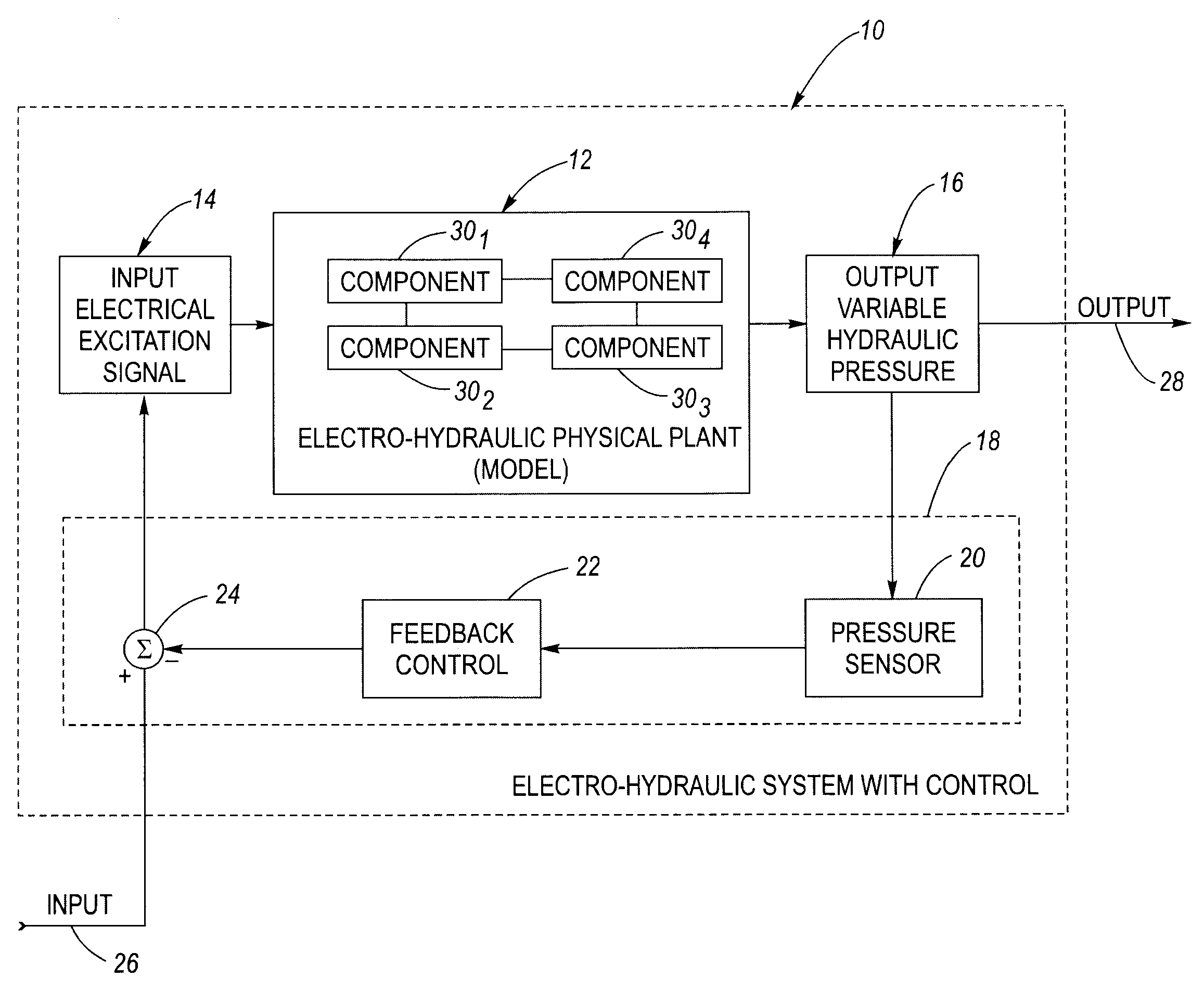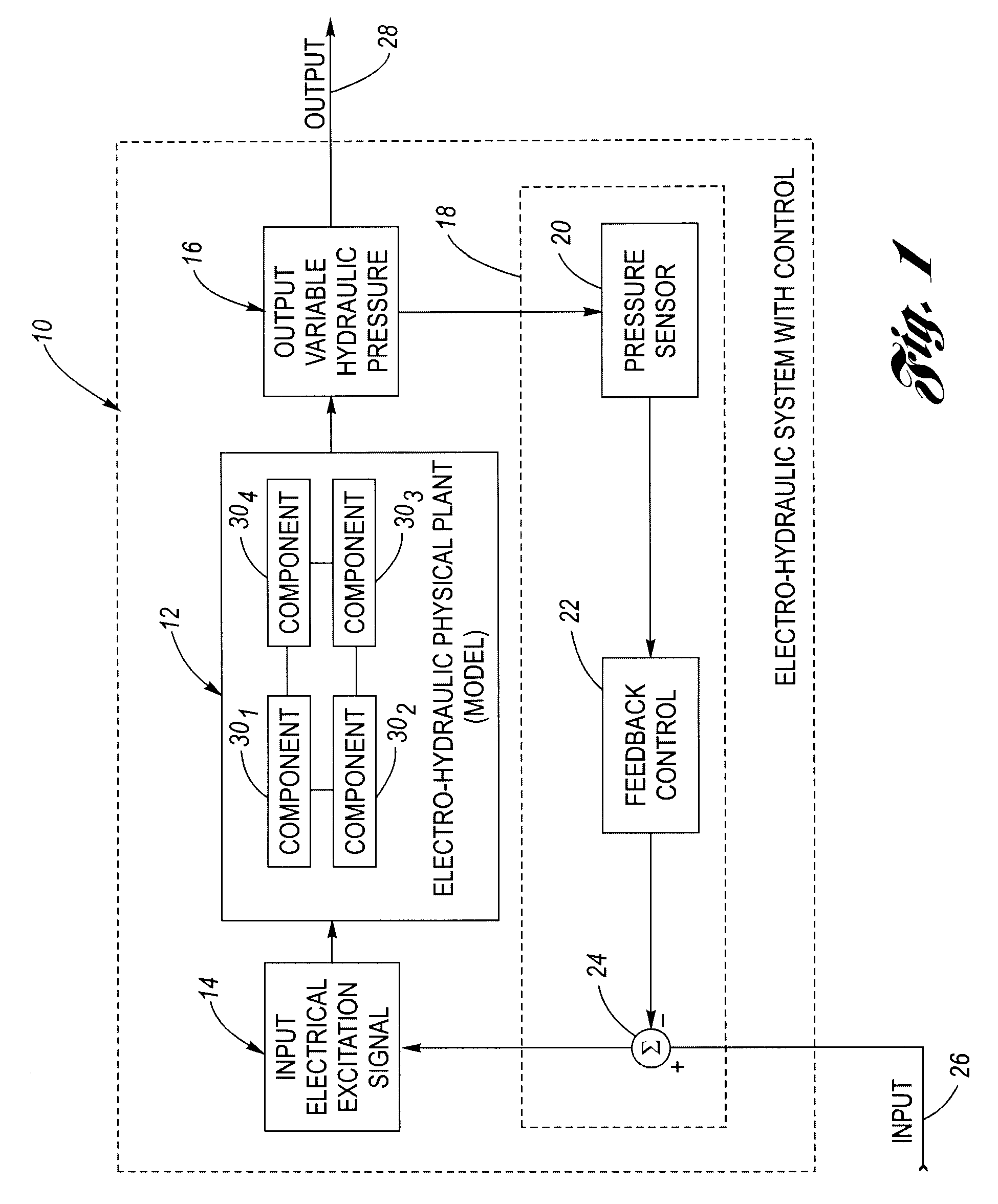Method for generating an electro-hydraulic model for control design
- Summary
- Abstract
- Description
- Claims
- Application Information
AI Technical Summary
Benefits of technology
Problems solved by technology
Method used
Image
Examples
Embodiment Construction
[0018]Referring now to the drawings wherein like reference numerals are used to identify identical components in the various views, FIG. 1 is a simplified block diagram of an electrically-controlled fluid pressure control system 10, which includes an electro-hydraulic (EH) physical plant 12. As described in the Background, in order to design a control system for an electro-hydraulic physical plant, an accurate model of the plant dynamics is conventionally required. However, developing an accurate model is a very time consuming and resource intensive process, and sometimes product development timelines do not allow for such accurate model development. Alternatively, product development timelines may be extended while awaiting development of the plant dynamics model. This conventional sequence essentially serializes the overall process, slowing development.
[0019]The present invention provides a systematic methodology to generate a model that accurately represents the dynamic response ...
PUM
 Login to View More
Login to View More Abstract
Description
Claims
Application Information
 Login to View More
Login to View More - R&D
- Intellectual Property
- Life Sciences
- Materials
- Tech Scout
- Unparalleled Data Quality
- Higher Quality Content
- 60% Fewer Hallucinations
Browse by: Latest US Patents, China's latest patents, Technical Efficacy Thesaurus, Application Domain, Technology Topic, Popular Technical Reports.
© 2025 PatSnap. All rights reserved.Legal|Privacy policy|Modern Slavery Act Transparency Statement|Sitemap|About US| Contact US: help@patsnap.com



